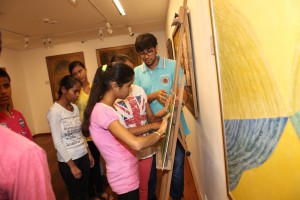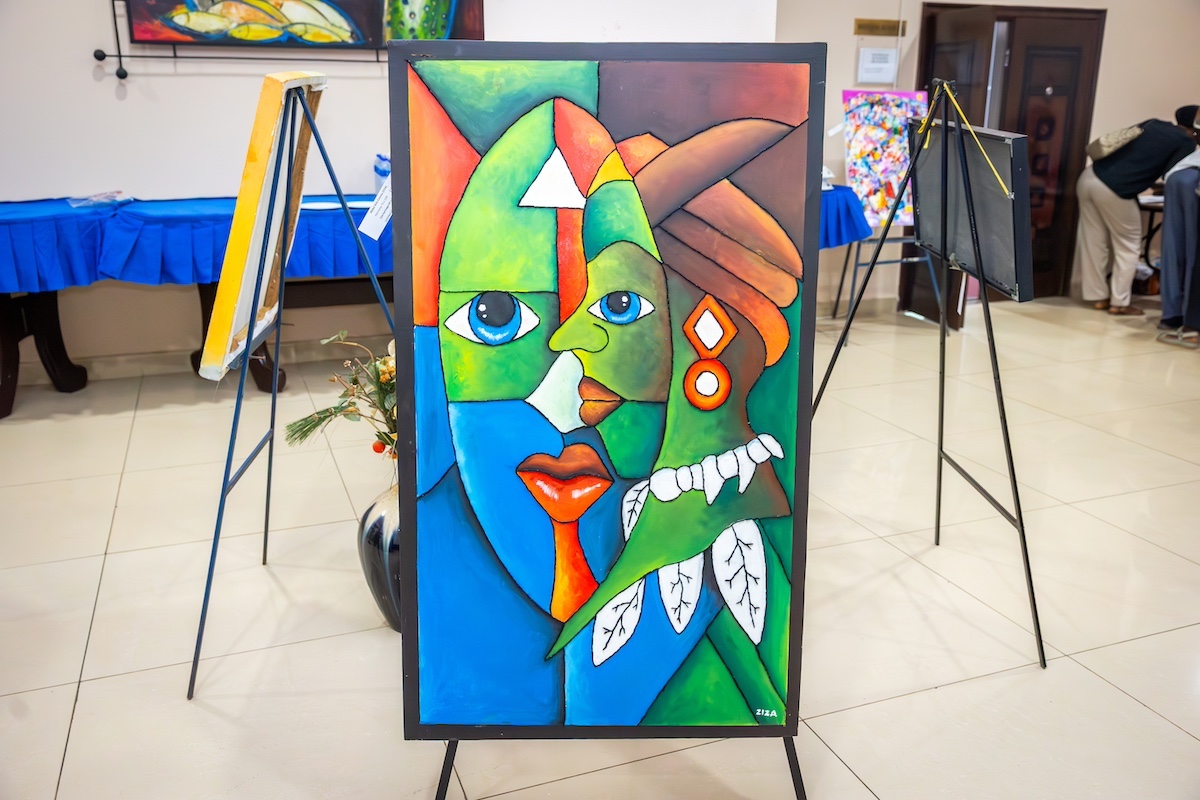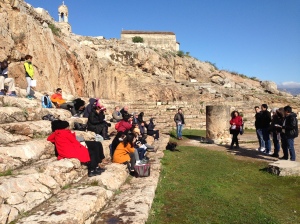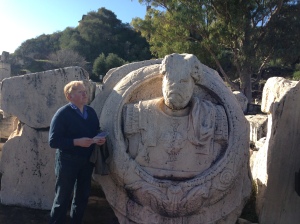: Heritage
Dr. Evangelos Kyriakidis’ Keynote at the 14th Cultural Routes Advisory Forum
HERITΛGE Director Dr. Evangelos Kyriakidis was the keynote speaker at General Session “Living Heritage of Landscapes: The Role of Cultural Routes in Sustainable Cultural Development and Community Empowerment” during the 14th Advisory Forum of the Cultural Routes of the Council of Europe.
The Forum, themed “Cultural Routes and Landscapes: Advancing Heritage Protection through Cultural and Sustainable Tourism,” brought together experts, policymakers, and cultural practitioners from across Europe to discuss how cultural routes contribute to the safeguarding of heritage, the empowerment of local communities, and the promotion of sustainable tourism.
In his keynote, Dr. Kyriakidis emphasized the need to recognize local communities as experts, ensuring meaningful collaboration and co-creation of knowledge in heritage initiatives. He stressed the importance of making heritage relevant by adopting local practices and ways of thinking, and empowering locals as key stakeholders in protecting their own heritage. By strengthening awareness and pride, he noted, heritage can help communities combat social injustice both at home and in the diaspora, aligning with Sustainable Development Goal 10.3 on reducing inequalities.
Learn more about the Forum here.
Training Artists, Telling Stories: HERITΛGE and VAAG Sign MoU in Banjul
 On Friday, July 18, The Heritage Management Organization (HERITΛGE) took another step forward in supporting The Gambia’s vibrant arts community by formalizing a partnership with the Visual Artist Association of The Gambia (VAAG) at the NCAC Pipeline Offices in Banjul.
On Friday, July 18, The Heritage Management Organization (HERITΛGE) took another step forward in supporting The Gambia’s vibrant arts community by formalizing a partnership with the Visual Artist Association of The Gambia (VAAG) at the NCAC Pipeline Offices in Banjul.
Dr. Evangelos Kyriakidis, Director of HERITΛGE, led a master class called “Telling Heritage Stories Through Art” for VAAG members. The session explored how visual art can become a bridge between past and present, helping communities preserve their stories while making them relevant for new generations.
The gathering drew important voices from The Gambia’s cultural landscape, including Mr. Hassoum Ceesay, Director General of the National Centre for Arts and Culture (NCAC), who emphasized the value of bringing together local institutions with international partners to strengthen heritage education.
By the end of the day, Mr. Modou Lamin Jatta, Chairman of VAAG, and Dr. Kyriakidis had signed a Memorandum of Understanding that opens doors for ongoing collaboration. The partnership promises more training opportunities, exhibition development, and chances for Gambian artists to share their heritage-inspired work with international audiences.
The collaboration is already showing results. This past February, VAAG organized a visual art exhibition during the HerMaP Gambia Certificate Award Ceremony, which marked The Gambia’s 60th Independence Anniversary. The exhibition showcased how contemporary artists are interpreting their nation’s story and contributing to conversations about identity and cultural memory.
HERITΛGE looks forward to continuing this work with VAAG and other local partners, creating spaces where heritage and creativity intersect. Together, they’re building platforms for artists to explore their history, connect with their communities, and imagine new possibilities for the future.
Discovering the Archaeologists of Africa Launches
You are invited to participate in the Discovering the Archaeologists of Africa project.
This project aims to bring a general perspective on who works in African archaeology and the ways that archaeology is done in African countries.
In this first stage of the project, we are asking people to complete a short survey that asks questions about employment in archaeology and academic provision. It will take approximately five to ten minutes to complete the questionnaire.
Your participation in this study is completely voluntary. There are no foreseeable risks associated with this project. However, if you feel uncomfortable answering any questions, you can withdraw from the survey at any point.
It is very important for us to learn your opinions. Your survey responses will be strictly confidential and data from this research will be reported only in the aggregate. Your information will be coded and will remain confidential. If you have questions at any time about the survey or the procedures, you may contact Kenneth Aitchison by email at [email protected].
We would appreciate as many people as possible contributing as possible – so please send this link – https://discoafrica.questionpro.com/ – to any colleagues who you think could help.
Start the survey
Training the future of Business in Heritage Management
Tactile Art and Bridging the Gap Between Cultural Heritage and Disability
A super energetic girls’ group from CBWDS (Centre for Blind Women and Disability Studies),New Delhi, shared their experiences with Siddhant Shah, after the tactile walk ‘Abhas’ at DAG Modern (a Modern Art museum in Delhi). Gudiya – as she is popularly called by her teachers, thanked Siddhant Shah and the team from DAG Modern who assisted them during the walk. She shared with the team how she and her friends were amazed to ‘touch and see’ the artwork. It was a first time experience for them to be invited to an art gallery and the opportunity to actually feel the objects, which was something that none of the other galleries offer. They are not equipped with the infrastructure that can make their space accessible to those with visual impairment. When the girls were asked about their favorite art work, there was a unanimous vote for the 3D tactile reproduction of the artwork by Eric Bowen. As they had fun touching the replica and exploring various shapes, lines and surfaces of this black and white strip artwork.

Siddhant Shah and students exploring the 3D Tactile Reproduction of Eric Bowen’s artwork
Photo Courtesy: DAG Modern
Their second favorite is the reproduction of J. Swaminathan’s, Bird, Mountain and Tree series, where they not only enjoyed touching and experiencing the artwork but also appreciated the element of smell in this reproduction. Ishrat Jahan, who hails from Banaras, is the youngest member of this group who receives and undertakes training in areas of crafts, candle making, braille reading and other skills. She made a remarkably interesting observation with reference to burnt wood Tactile Aid for Jeram Patel’s Art work, commenting on how amazed she was to learn that creating something did not always involve sticking things together – but one could also burn to create something new.

Students exploring the 3D Tactile Reproduction of J. Swaminathan’s artwork
Photo Courtesy: DAG Modern
Siddhant Shah, who is the creator of ‘Abhas, a Tactile Experience’, feels that his work is successful when he hears comments like these. It fits the main aim of this initiative – allowing one to experience art with multiple senses and being aware of the ideas and concepts that exist in the art-scape. The students of CBWDS concluded the discussion with a round of chai or Indian tea, essentially with milk and sugar, while Gudiya made a parting statement, saying that sensing the various materials through touch, had helped her think about other unique ways of using paper, strings and sand for her handicraft training sessions.

Siddhant Shah, a Stavros Niarchos Scholar finished his MA in Heritage Management from the University of Kent (Athens Campus, Greece). His first degree is in Architecture with a Pg. Dip. Indian Aesthetics, and is an Access Management Consultant who specializes in bridging the gap between Cultural Heritage and Disability. He works with museums, art-events, art galleries and cultural sites to make them more accessible through educational and multi-sensory experiential activities, focusing on kids and groups with special needs. He has designed books in Braille for cultural organizations in India and Pakistan along with Tactile Art & Heritage Walks. He has written and designed India and Pakistan’s 1st Open Braille guide book with large script font and tactile plates. Shah consults national and international museums like National Museum, Jaipur City Palace Museum, State Bank of Pakistan Museum and other organizations like DAG Modern, Art1, India Art Fair amongst others. His is driven with a focus to either ‘Get a Person to the context or get the Context to the person’.
National Gallery Strike Reveals Importance of HR Management
After 111 days of strike the more than 200 strikers of the National Gallery of London under the aegis of the Public and Commercial Services (PCS) Union declared (partial) victory last October. The strike started as plans of the outgoing director – upheld by the trustees of UK’s National Gallery – decided to outsource the jobs of the ‘front-line’ staff, i.e. people in tickets, Gallery rooms, shops and so on, to a security company.
The plans were based on the premise that the security company could pay its staff much less than the Gallery in order to not only do things cheaper but also make a profit. Despite the declared industrial motion victory, the plans for outsourcing will go ahead. (more…)
- 1
- 2





